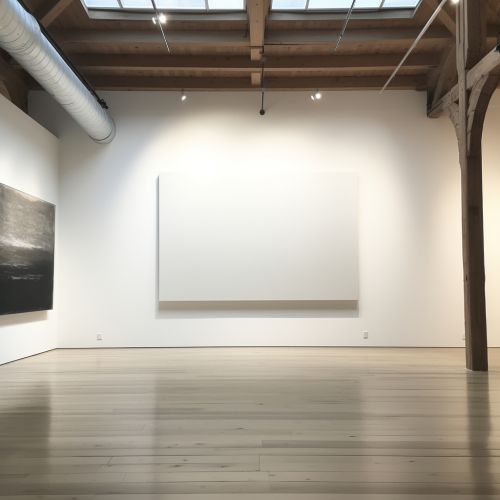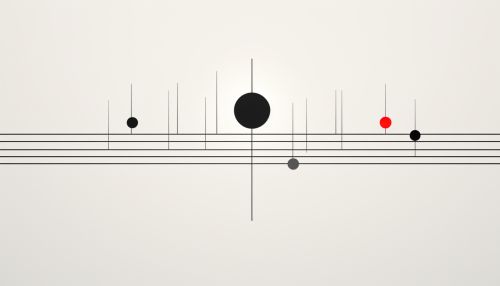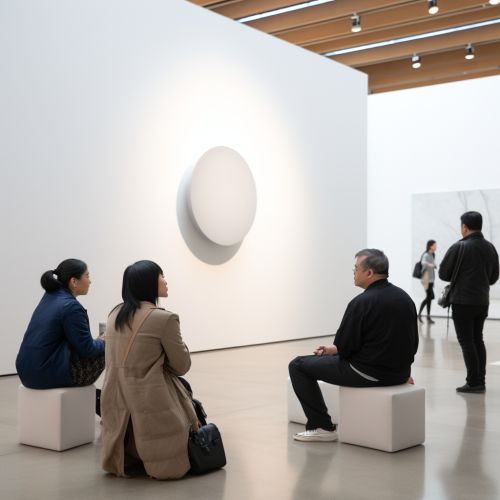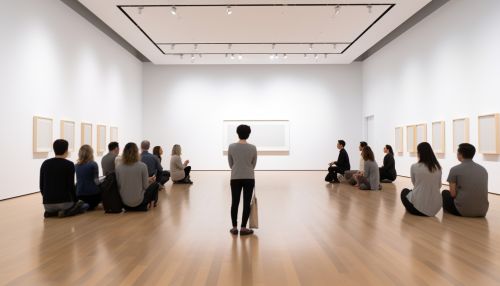Minimalism
Origins and Early Development
Minimalism is a movement that emerged in the late 1950s as a reaction against the complexity and expressiveness of abstract expressionism. It was characterized by a reduction in form and color to their simplest expressions, often using geometric shapes and monochromatic palettes. The term "minimalism" was first used in 1965 by British philosopher Richard Wollheim to describe these works, which he felt were minimal in their aesthetic and conceptual content.


The roots of minimalism can be traced back to the early 20th century, with the works of Russian artist Kazimir Malevich and Dutch art movement De Stijl. Malevich's "White on White" (1918) and the De Stijl's emphasis on basic visual elements such as geometric forms and primary colors laid the groundwork for the minimalist aesthetic.
In the 1960s, minimalism began to gain prominence in the New York art scene. Artists such as Donald Judd, Dan Flavin, and Agnes Martin were creating works that were stripped down to their essential features, devoid of any representational content or personal expression. These works were often made using industrial materials and processes, further emphasizing their impersonal and objective nature.


Principles and Characteristics
Minimalism is defined by several key principles and characteristics. The most fundamental of these is the reduction of form and content to their simplest expressions. This is often achieved through the use of basic geometric shapes, such as squares, circles, and lines, and a limited color palette, often monochromatic or using primary colors.
Another key characteristic of minimalism is the emphasis on the physical presence of the artwork and the viewer's experience of it. Minimalist artists often create large-scale works that occupy and define the space in which they are displayed, engaging the viewer in a direct and physical way. This focus on the object and the viewer's experience of it is often referred to as the "phenomenological" aspect of minimalism.


Minimalist art is also characterized by its impersonal and objective nature. It is devoid of any representational content or personal expression, instead focusing on the inherent qualities of the materials and forms used. This is often achieved through the use of industrial materials and processes, which further emphasize the impersonal and objective nature of the work.
Impact and Influence
The impact and influence of minimalism can be seen in a variety of fields, from visual art and music to architecture and design. In the visual arts, minimalism has influenced a number of subsequent movements, including conceptual art, land art, and installation art. These movements have adopted the minimalist emphasis on the physical presence of the artwork and the viewer's experience of it, as well as its reduction of form and content to their simplest expressions.
In music, minimalism has influenced a number of composers and genres, from Steve Reich and Philip Glass in classical music to Brian Eno and Kraftwerk in electronic music. These artists and genres have adopted the minimalist emphasis on repetition and simplicity, often creating works that are stripped down to their essential elements.


In architecture and design, minimalism has influenced a number of styles and movements, from modernist architecture and Scandinavian design to Japanese architecture and industrial design. These styles and movements have adopted the minimalist emphasis on simplicity and functionality, often creating works that are stripped down to their essential forms and materials.
Criticism and Controversy
Despite its influence and prominence, minimalism has been the subject of criticism and controversy. Some critics argue that it is overly simplistic and lacks depth or meaning, reducing art to its most basic elements without any consideration for its broader cultural or social context. Others argue that it is elitist and inaccessible, appealing only to a small group of art insiders and alienating the general public.


In addition, some critics argue that minimalism is inherently conservative and reactionary, rejecting the complexity and diversity of contemporary life in favor of a simplified and idealized vision of reality. They argue that this rejection of complexity and diversity is reflective of a broader cultural and political conservatism, reinforcing traditional power structures and hierarchies.
Despite these criticisms, minimalism continues to be a significant and influential movement in the art world and beyond, with its principles and aesthetics continuing to shape and inform a wide range of practices and disciplines.
